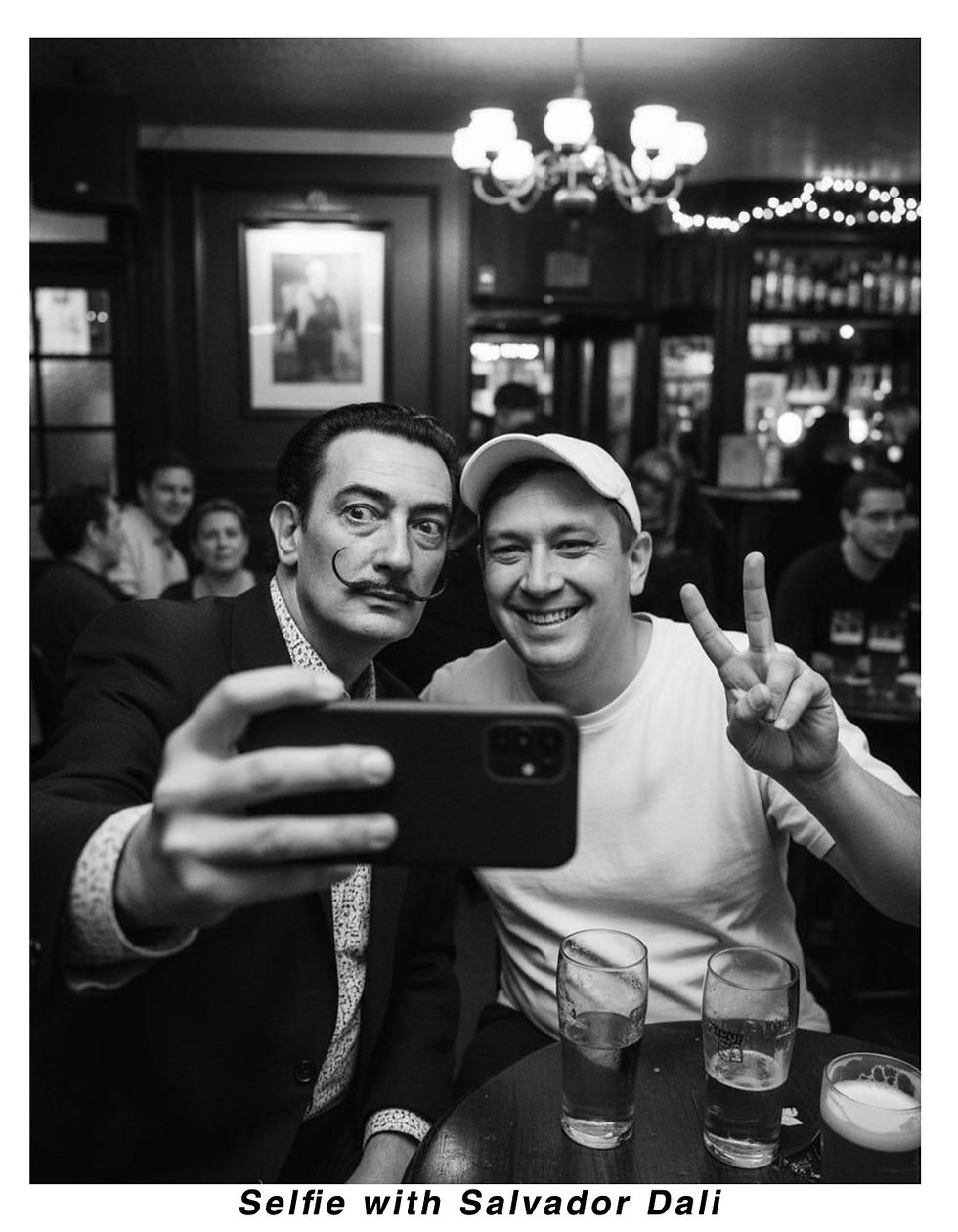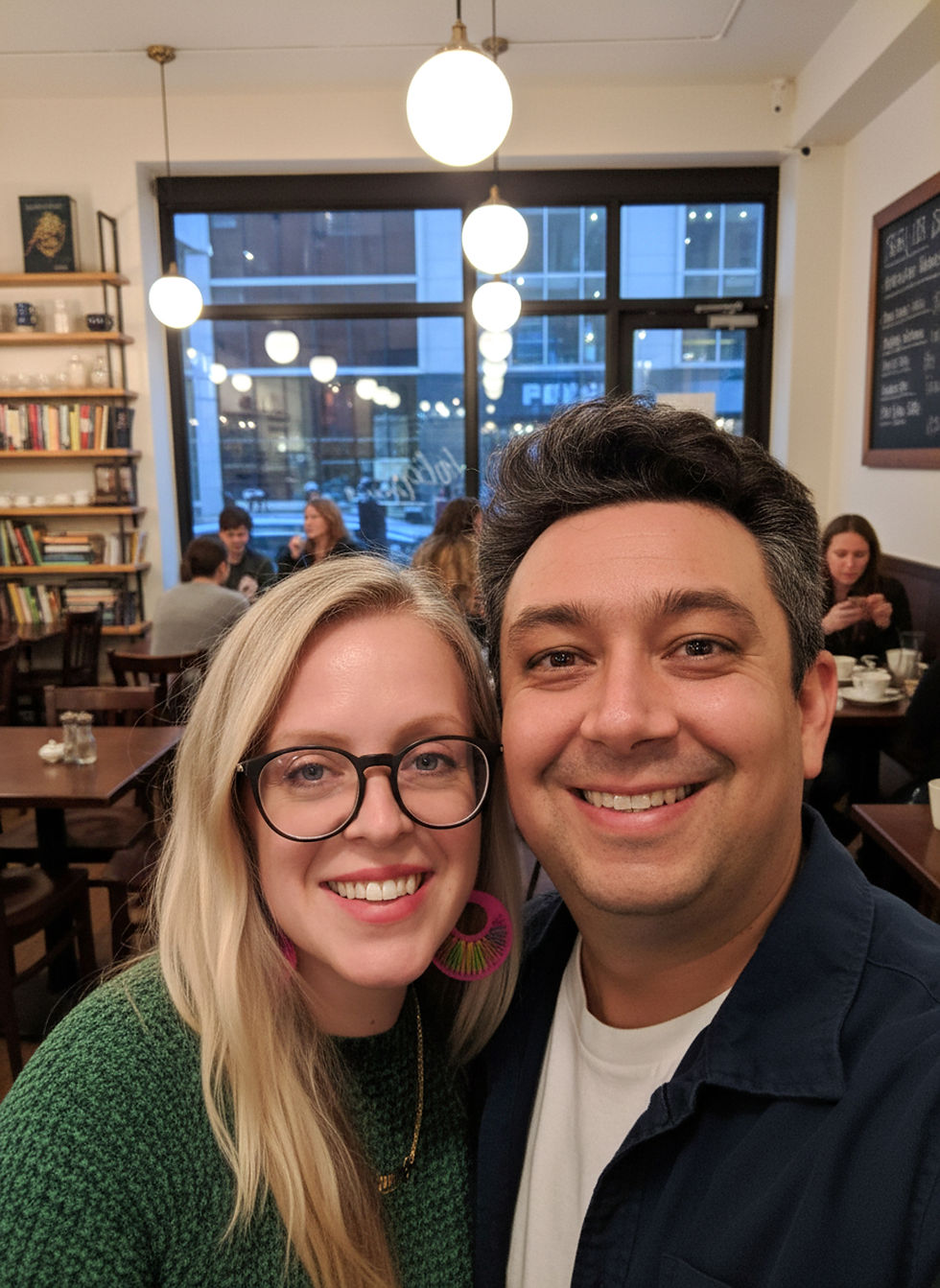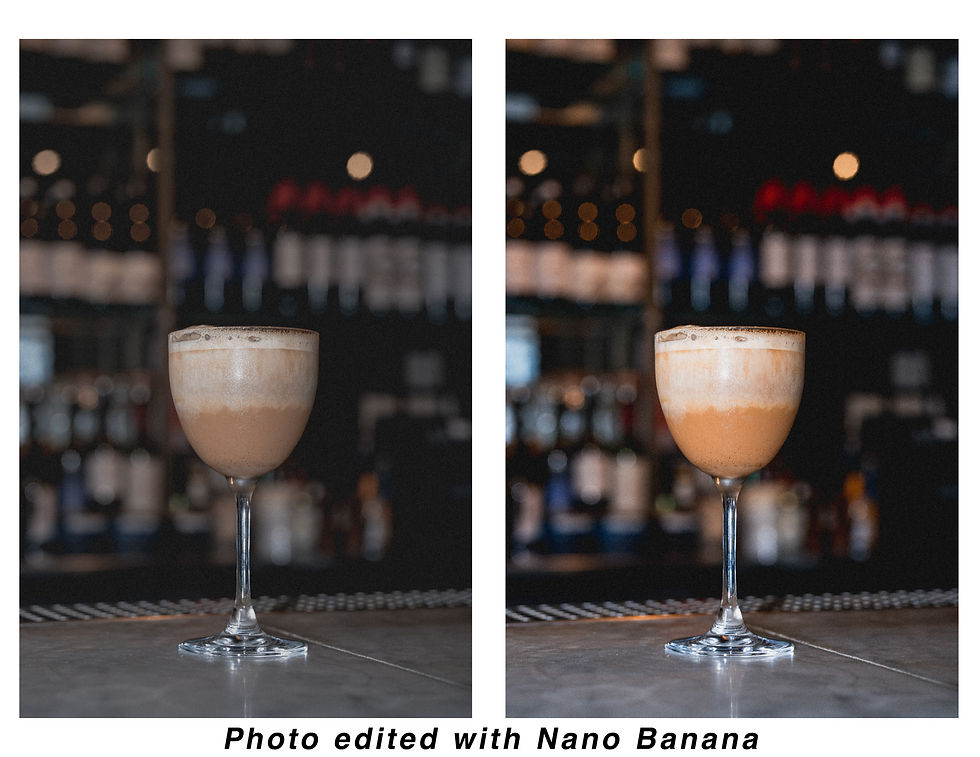The Creative Industry Needs AI, and AI Needs Us
- Sep 19
- 6 min read
Our new blog today comes from Xavier Buendia, a valued member of our Connected100 Business Club.
In this thought-provoking piece, Xavier explores why the creative industry shouldn’t fear AI, but embrace it. From using ChatGPT as a virtual studio assistant to experimenting with cutting-edge image tools, he shares how AI can expand, not replace, the role of creatives.
Hi everyone, let me start by saying this plainly: resisting AI in the creative industry is like refusing to use a camera because paint already exists. It’s not just pointless, it’s absurd. The conversation isn’t about whether AI should exist, but how we, as creative professionals, choose to engage with it.
I’ve been exploring this world firsthand. For the past couple of years, I’ve been working with different AI technologies as part of my creative process and professional work flow. My main companion has been ChatGPT, which I’ve come to train as my virtual assistant, a kind of ever-present studio aide who never gets tired of my questions, and experiments. And more recently, I’ve been diving into Nano Banana, a fascinating AI platform for editing and generating images. Together, these tools won’t replace me, they expand my skillset and my process. They stretch the boundaries of what’s possible, and they make me sharper, bolder and more resourceful in my craft.
Yet, whenever the subject of AI comes up in creative circles, I notice the same resistance, the same defensive fear. “It’s going to take our jobs.” “It will make creativity obsolete.” “It’s not authentic, it’s cheating.”
Let me be disruptive for a moment: the real danger isn’t AI replacing us, it’s us refusing to evolve with it.

The camera argument, again and again…
History has a funny way of repeating itself. When photography appeared in the 19th century, painters panicked. Critics declared painting was finished. Who would want to look at a portrait when a camera could capture reality in seconds? But painting didn’t die. It shifted. Impressionism, Cubism, Surrealism… whole new ways of seeing were born precisely because photography freed painters from the burden of representation and guess what? painters adopted photography as part of their process!
We can choose to see AI as a threat, or we can let it liberate us. Photographers won’t vanish, nor will designers, nor copywriters. Only those who cling to “the way things were” will fade into irrelevance and that, my friends, is what kills a business. Only those who adopt these new technologies not as a cheat but as a collaborator will create work that pushes into new, uncharted territories. Isn’t that the core of our creative industry?

My studio assistant that never sleeps.
Working with ChatGPT has shifted my practice in ways I didn’t anticipate, as a highly focused small business owner, budget and time are my main handicaps so I needed an assistant that could be there on demand, always ready to expand the dialogue and that is continuously learning about me, my personality, my values, curiosities, goals and my tone of voice.
When I’m planning a photo essay or structuring a workshop, I can throw rough thoughts into a conversation with my virtual assistant, and suddenly these ideas sharpen. I’ve trained it to be an intellectual version of myself who’s endlessly curious, who never gets tired of my tangents, who can pull threads from philosophy, psychology, or art history at a moment’s notice. It’s like e having this constant brainstorming partner except this one doesn’t take sick days or postpones meetings.
More recently with Nano Banana, I’ve started experimenting with editing workflows that used to take hours, it’s not there yet at a professional level though but I can see its potential already. Tasks that once felt tedious like isolating details, tweaking backgrounds or, experimenting with alternative colour palettes are now opportunities for play. I can explore ideas at a velocity that wasn’t possible before, which means my final work carries more refinement with a wider window of opportunities.
For example, a client complained about a picture where the front of their shop looked a bit tired and asked if we could re-schedule a shoot for when the shop front is re-painted. I said, no need, let’s try some AI enhancement and voila:

Another example: with my friend Lyndsey, we always forget to take a selfie after our coffee catchups, so on the bus I reminded her of this and asked her to send me a selfie with the aim to generate something for this blogpost:

Don’t fire the creatives, hire the brave ones.
Here’s my problem with professionals today: they hear about AI, and they think they can cut out the humans. “Why pay a photographer if an algorithm can generate images?” “Why hire a copywriter if ChatGPT can draft text?” This thinking is foolish and short-sighted!
An AI tool is only as powerful as the human guiding it. Ask it the wrong question, and you’ll get noise. Feed it poor prompts, and you’ll get clichés. But in the hands of a skilled creative with a vision and purpose to help you and your business, a photographer who understands visual storytelling, a designer who thinks in systems, a copywriter who hears rhythm in language, AI becomes something else entirely.
So don’t get rid of your creatives. Find the ones who are already learning to use these tools, who are weaving them into their practice, who are unafraid of experimenting. Those are the creatives who will not only keep up with the times but will redefine them.

A positive disruption.
Disruption has always been part of the creative cycle. Every movement in art, design, and technology was disruptive once. Bauhaus, Cubism, Punk, Hip-Hop…none of these emerged politely. They broke rules, they offended the establishment, they forced people to rethink what was possible.
AI is no different. It disrupts our workflows, our notions of authorship, even our definition of creativity. But disruption doesn’t mean destruction. It’s simply the friction that ignites a spark for growth.
I believe we’re at a turning point. Those who embrace AI will discover new languages of creativity, new methods of expression, new collaborations between human intuition and machine precision. And I’m very optimistic about the panorama ahead of us.
I’m not naïve. I know AI comes with risks and ethical questions, biases and power imbalances. These are real challenges, and they need real answers. But I also know that creativity has never thrived on fear. It thrives on curiosity and risk-taking. That’s why I’m optimistic about it. I choose to see AI as part of my studio, part of my practice and part of my future. And honestly, I don’t want to go back. I don’t want to live in a world where creatives are chained to repetitive tasks, to stress and burnout, where innovation is slowed by bureaucracy, or a narrow-minded narrative where the only acceptable way of working is “the way it’s always been.” I want to live in a world where innovation opens doors to endless possibilities.

Conclusion: my call to creatives and clients
So here’s my invitation, both to fellow creatives and to those who hire them.
If you’re a creative: don’t fear AI. Learn it. Play with it. Break it. Let it become part of your toolkit, as natural as your pen, your camera, or your sketchbook. This is the next chapter in creativity, not the end of it.
And if you’re a client: don’t hire someone because they promise you “authentic, human-made emotions” That’s just nostalgia hiding behind poor branding. Instead, ask them first if they’re integrating new technologies into their vision and how these can add value to your collaboration. Chances are, they’re the ones that will take your project further.
The future of creativity isn’t human or machine, it’s human with machine. That’s not a threat. That’s a revolution.
--
Xavier Buendia is a creative director and photographer based in Brighton. His work bridges commercial projects and long-form personal narratives, often exploring the human potential through visual storytelling, and the intersection of modernist aesthetics with contemporary culture. He also publishes the Xavografica newsletter, where he shares insights on creativity, craft, and the evolving role of technology in the arts.
Xavier is celebrating 10 years in business as a freelance photographer in Brighton. As a thank you to the community for their immense support, he's offering a complimentary branding photoshoot to one small business that is no older than 2 years and is all about sustainability and purpose-led led like Xav's business is.
To enter, tell me a little bit about your business filling in this form: https://www.xavierbuendia.com/10yearsinbiz and I will choose a winner by the end of October.
Website: xavierbuendia.com/
Newsletter: https://xavografica.substack.com/
Instagram @xavogram




This is a fascinating perspective on how AI and creativity can collaborate rather than compete it got me thinking of my own writing challenges. When working through drafts, I sometimes felt like my ideas were racing ahead while my structure lagged behind. At that point, I sought academic dissertation editing services not because I wanted someone else’s voice, but to help me bridge the gaps: to tighten logic, smooth transitions, and let my arguments emerge more clearly.